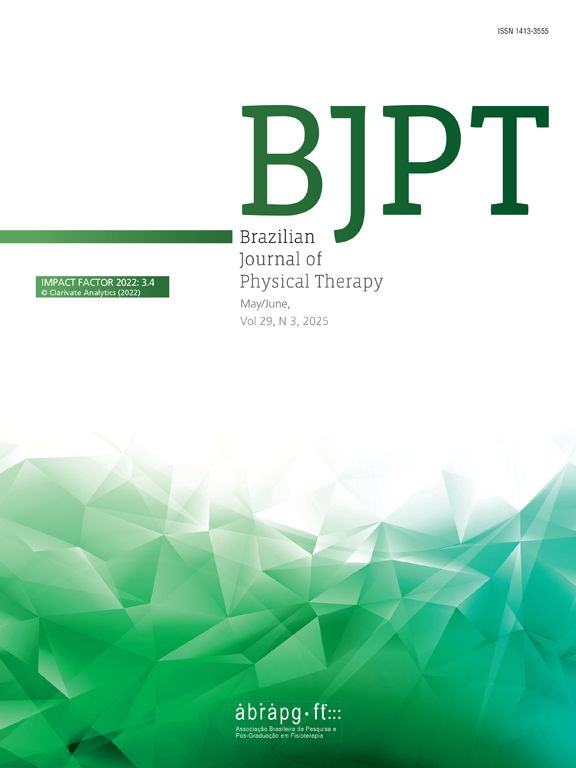Articles that have received the most social media attention. Number of times they have been referenced in the last 3 years.
654
Has physical therapists’ management of musculoskeletal conditions improved over time?Joshua R. Zadro, Giovanni Ferreira
Braz J Phys Ther. 2020;24:458-62
654
Highlights
- •
Physical therapists’ use of recommended care has not changed since 1990s.
- •
Physical therapists’ use of treatments of unknown value appears to be increasing.
- •
One explanation for these trends is the challenge of keeping up to date with evidence.
- •
Other explanations include increased exposure to treatments of unknown value and not seeing value in research.
- •
Strategies to replace non-recommended care with recommended care are needed.
638
Beliefs about the body and pain: the critical role in musculoskeletal pain managementJ.P. Caneiro, Samantha Bunzli, Peter O'Sullivan
Braz J Phys Ther. 2021;25:17-29
638
Highlights
- •
Beliefs are an important target for the management of musculoskeletal pain.
- •
Behavioural learning is key to elicit and disconfirm unhelpful beliefs.
- •
We propose key principles to guide clinicians in promoting behavioural change.
- •
A case illustrates the role beliefs have on musculoskeletal pain management.
287
Self-management at the core of back pain care: 10 key points for cliniciansAlice Kongsted, Inge Ris, Per Kjaer, Jan Hartvigsen
Braz J Phys Ther. 2021;25:396-406
287
Highlights
- •
Self-management support is person-centred care reinforcing patient autonomy.
- •
Avoid strong clinician control and help patients developing self-efficacy.
- •
Let patients’ value-based goals and shared decisions guide management.
- •
Help patients make sense of symptoms and reframe unhelpful perspectives.
Use supervised exercises as a tool to practice problem-solving skills
137
Attitudes and beliefs on low back pain in physical therapy education: A cross-sectional studyMarijke Leysen, Jo Nijs, Paul Van Wilgen, Christophe Demoulin, Wim Dankaerts, Lieven Danneels, Lennard Voogt, Albère Köke, ... Nathalie Roussel
Braz J Phys Ther. 2021;25:319-28
137
Highlights
- •
Guideline adherence for low back pain is very low among physical therapy students.
- •
Fourth year students show more biopsychosocial beliefs and more guideline adherent recommendations than 2nd-year students.
- •
Biomedical beliefs are associated with poor adherence to evidence based guidelines.
- •
A personal history of low back pain is not associated with beliefs or attitudes.
121
Effect of combined interval training on the cardiorespiratory fitness in heart failure patients: a systematic review and meta-analysisIncare Correa De Jesus, Francisco José de Menezes Junior, Paulo Cesar Barauce Bento, Astrid Wiens, Jorge Mota, Neiva Leite
Braz J Phys Ther. 2020;24:8-19
121
Highlights
- •
Interval training is an interesting strategy in increasing aerobic capacity.
- •
In patients with heart failure the use of combined interval training may effective in increasing VO2peak.
- •
Interval training combined with resistance training can maximize treatment time.
- •
Maximize treatment time is an aspect that has been important in the choice of interventions.
- •
Training combined showed more effective in improving VO2peak in patients with heart failure.





